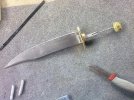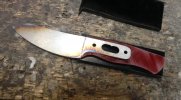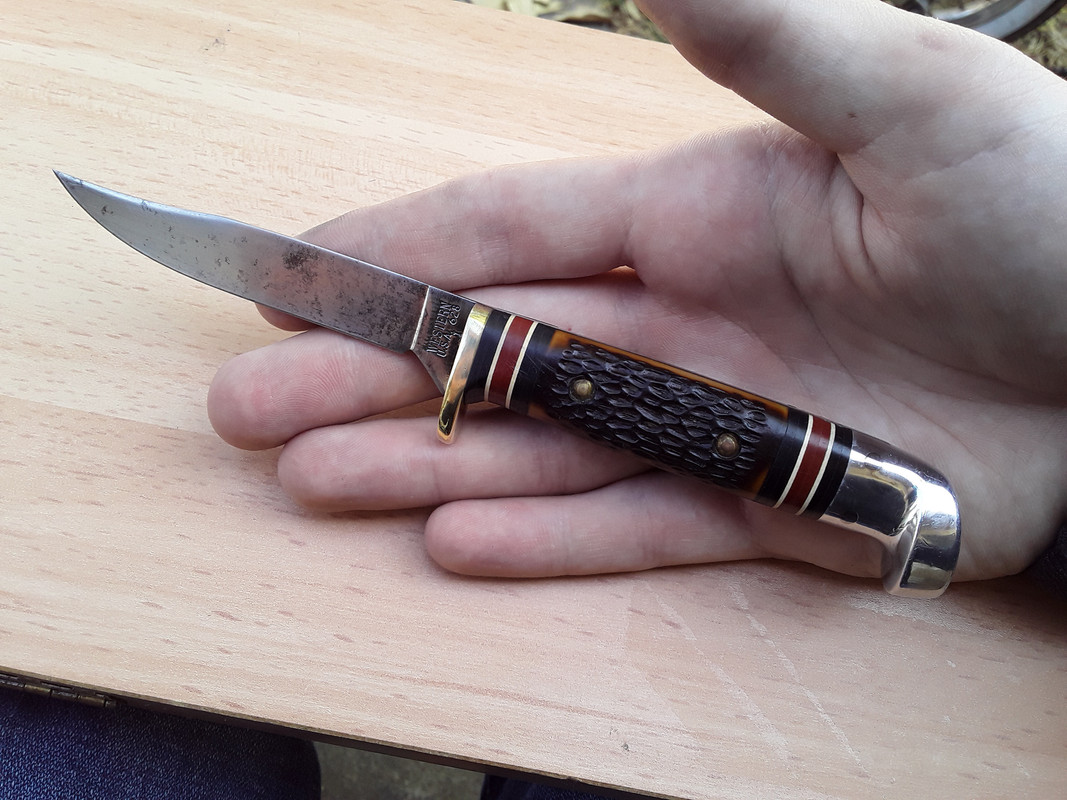- Joined
- Aug 4, 2013
- Messages
- 3,989
So, this is a post/thread I felt would be of help in revealing those "tangs" that are hidden in a knife's handle.
What gave me this idea was, the many times that I've seen hidden tang fixed blade knives and wondered what those tangs actually look like and... what method was used to keep it secured to their handles?
I figured maybe if a post/thread is started here, we, as a group of traditional knife owners, can contribute to revealing these tangs.
I still get surprised by what I sometimes find online, since there are oh so many ways that a hidden tang is done.
I will start with a knife that I actually do not own, but one that did surprise me in it's hidden tang method when I came across photos of it online.
This would be Case' classic XX Bowie Knife.
The handle on these knives are usually the white or black synthetic material.
By looking at one from the exterior, one would guess that the three brass rivets in the handle would all be going through the tang to secure it. Well, based on this photo of just the blade, the tang only has one hole that likely has one of the rivets going through it during assembly, while the other two rivets would seemingly only be there for aesthetics.
I don't know if the handle is molded directly onto the tang, or if the handle is pre-formed and possibly glued onto the tang, and then the installation of the one brass through rivet. So, some questions are still not answered by this photo, but the model's tang is revealed...


So, if you folks have some photos you can share to reveal the hidden tangs on traditional fixed blade knives... Please share with us to help take the mystery out of them.



What gave me this idea was, the many times that I've seen hidden tang fixed blade knives and wondered what those tangs actually look like and... what method was used to keep it secured to their handles?
I figured maybe if a post/thread is started here, we, as a group of traditional knife owners, can contribute to revealing these tangs.
I still get surprised by what I sometimes find online, since there are oh so many ways that a hidden tang is done.
I will start with a knife that I actually do not own, but one that did surprise me in it's hidden tang method when I came across photos of it online.
This would be Case' classic XX Bowie Knife.
The handle on these knives are usually the white or black synthetic material.
By looking at one from the exterior, one would guess that the three brass rivets in the handle would all be going through the tang to secure it. Well, based on this photo of just the blade, the tang only has one hole that likely has one of the rivets going through it during assembly, while the other two rivets would seemingly only be there for aesthetics.
I don't know if the handle is molded directly onto the tang, or if the handle is pre-formed and possibly glued onto the tang, and then the installation of the one brass through rivet. So, some questions are still not answered by this photo, but the model's tang is revealed...


So, if you folks have some photos you can share to reveal the hidden tangs on traditional fixed blade knives... Please share with us to help take the mystery out of them.
Last edited:















